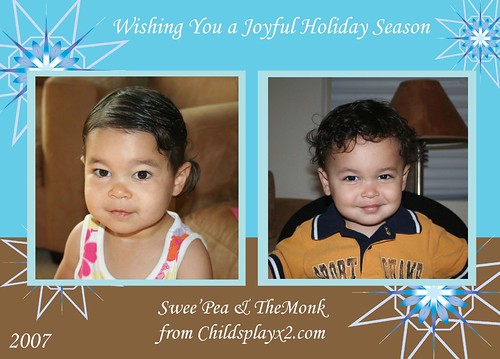A Homesick Home Family Tradition
L. from The Homesick Home is one of my favorite bloggers. She is often so refreshingly honest in her writing that you really feel for her when she’s going through a rough stretch or want to celebrate with her when things are going well. In addition, before I did this introduction I checked out all the comments she’s ever left on this blog and you gotta love a person who is willing to share with the world that she left her kid sitting in a grocery cart once. (See! There’s that honesty thing! And to be fair, I was in such a sleep-deprived coma my first year of parenthood that it is an absolute miracle that I didn’t do the exact thing same thing.)
Anyway, another reason I love reading Homesick Home is that she is raising bi-racial, bi-lingual and bi-cultural children. I love reading about how language and culture collide and I was eager for L. to share a Family Tradition that revolved around her family’s Japanese culture. She didn’t disappoint. So, without further ado, please welcome L.
In our house, no matter where we’re living, Christmas is just the runner-up to the Japanese New Year celebration.
When we were in Tokyo, the kids had to go to school on Christmas Day, and my husband and I had to go to work. We put up a tree and decorations, but otherwise, it was a pretty ordinary day. I took the kids to mass on Christmas Eve, and we usually had a nice dinner, which included a Japanese Christmas cake. But sometimes my workaholic husband couldn’t even get home in time to eat it with us. Hey, it just wasn’t his holiday.
Now, New Year’s, or “Oshogatsu,” on the other hand, is a very big deal. Most Japanese are off for a whole week from late December until Jan. 4. Every year, we would go to his parents’ house in Kyoto, where his mother would cook all the traditional foods. And then one day we would all walk to Kitano Tenman-gu , a Shinto shrine near their house, to do our “hatsumode“.
Although Oshogatsu is considered a serious holiday, more for reflection and atonement and quiet time with loved ones than revelry, kids still have their fun. They receive “otoshidama” — envelopes of cash — from all their relatives. The entire country shuts down for a few days, but most toy stores, from big chains to mom-and-pop shops, are open for business, so that kids can spend their holiday loot.
Now that we’re in America, of course, Christmas is a very big deal, but I’ve managed to keep it low-key in our house. My kids are conditioned to not expect very much, which I’ve recognized is a very good thing. They get one big present (this year they got a Wii) and a few stocking stuffers, and that’s it.
There are a couple of Christmas traditions that we brought over from Tokyo:
We still make a Christmas cake (from a mix in a box, of course) and I let the kids decorate it themselves with lots of gooey white icing and candy.
We decorate a live, potted pine tree. Cut trees are hideously expensive over there — a friend of mine once paid the equivalent of $200 for one. I didn’t want to go the artificial tree route because we always lived in tiny apartments in Tokyo, and I just didn’t want another damn box to store. So I bought a small tree growing in a pot. It lived on our balcony 11 months of the year, and every year I put it into a larger pot, so it got a little bigger. We used the same tree for our seven Christmases in Tokyo. In San Francisco, an Afghan pine I bought in 2005 for about 50 bucks at Home Depot has just been decorated for its third year, so I think I really got my money’s worth.
However, there are a few problems: I have to clean the dead leaves and spider webs off the tree before I bring it in, and I’m always afraid some creepy crawlies are going to hatch out of it and infest the house. This year, I sprayed it with Raid, but then after that I worried about exposing us to pesticide.
Also, as the tree grows, it looks less and less like a Christmas tree, and more like a potted shrub. I try to prune it into a classic shape as best I can, but I am no bonsai artist, and every year, it looks a little more scraggly, and worse for the wear. Of course, when the decorations are on it, it still transforms into something really lovely.
Moving on to Oshogatsu, every year when we’re not in Japan my husband makes a few traditional dishes, which never fails to astound me. To say that he is not a cook is a bit of an understatement — to say that he has a serious case of “kitchen aversion” comes closer to the truth. Therefore, I am always amazed to see him standing over pots on the stove. Fortunately, the only two dishes he makes are “soba” “ozoni” soup with “mochi” , all of which only involves boiling. And even someone with serious “kitchen aversion” can boil stuff.
There’s a saying in Japan that was popular when I first arrived there in the mid-1980′s, that “Unmarried women are like Christmas cakes –no one wants them after the 25th.” So if you were 26 and unmarried, you were compared to a stale cake that had missed its moment. (Note: Imarried my husband when I was 25, but I want to assure everyone that had nothing to do with any fear of being compared to stale baked goods.)
I’m happy to report that I have lived long enough that this is now referred to as an “old” saying, and no longer seems to apply. I think the average age for women to get married is now around 27 or 28.
Plus, as I watch my kids eagerly devour the leftover gooey cake we made last week, I can assure you, Christmas cake is still VERY much in demand after the 25th.
Happy new year, everyone, from all of us at the Homesick Home.












